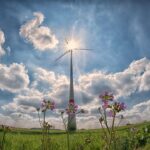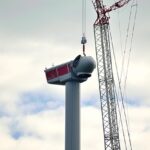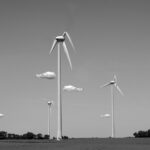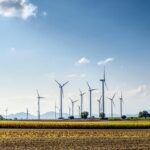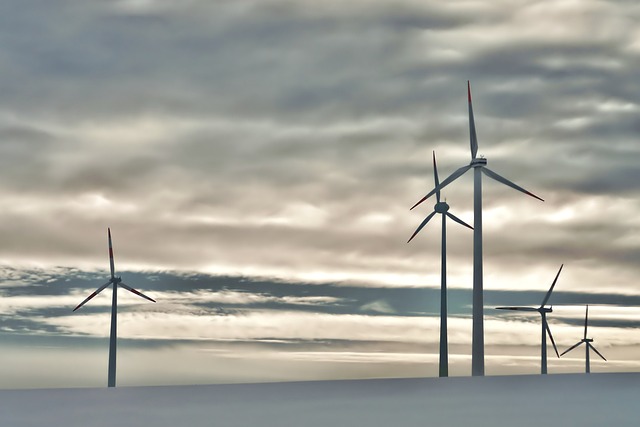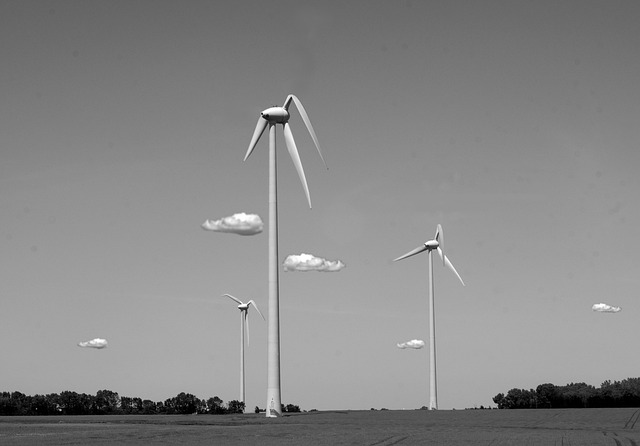Beyond the Turbine: Innovations in Wind Power Technology
Wind power has long been celebrated as a clean and renewable energy source, harnessing the power of the wind to generate electricity. However, as the global demand for sustainable energy increases, the wind power industry is evolving beyond traditional turbine technology. Innovative advancements in design, materials, and energy storage are reshaping the landscape of wind energy, making it more efficient, reliable, and accessible. This article delves into some of the most exciting developments in wind power technology that are poised to revolutionize the sector.
The Evolution of Wind Turbines
While traditional horizontal-axis wind turbines (HAWTs) have dominated the market for decades, the industry is now witnessing a shift toward alternative designs. Vertical-axis wind turbines (VAWTs), for example, offer some unique advantages. Unlike HAWTs, which rely on the wind blowing in a consistent direction, VAWTs can harness wind from any direction. This increases their versatility and potential for deployment in urban areas where wind patterns can be unpredictable.
Recent advancements in materials science have also led to lighter, more durable turbine blades. These innovations not only enhance the efficiency of energy capture but also extend the lifespan of the turbines, reducing long-term maintenance costs. Enhanced rotor blade designs, utilizing advanced composites and aerodynamics, are enabling turbines to harness higher wind speeds while reducing noise pollution—making them more acceptable in residential areas.
Offshore Wind and Floating Turbines
The offshore wind sector is experiencing remarkable growth, driven by the abundance of wind resources located over coastal areas. Offshore wind farms can capitalize on higher and more consistent wind speeds compared to land-based counterparts. However, traditional fixed-bottom turbines are limited to shallow waters. The emergence of floating wind turbines has opened up new possibilities by enabling energy generation in deeper waters where wind conditions are often optimal.
Floating turbines use a buoyant platform anchored to the seabed, allowing them to be positioned in locations previously considered unsuitable for wind farms. The technology is still in its infancy, but pilot projects in regions like Scotland and Norway have shown promising results. With advancements in engineering and cost reduction, floating wind energy is expected to play a significant role in future wind power generation, potentially transforming it into a global renewable energy source.
Wind Energy Storage Solutions
One of the inherent challenges of wind energy is its intermittency: wind doesn’t always blow when demand is high. Therefore, effective energy storage solutions are crucial for maximizing the use of wind power. Recent innovations in battery technology and energy storage systems are addressing this challenge head-on.
Large-scale battery systems, such as lithium-ion and flow batteries, are being developed to store surplus energy generated during high wind periods for use during lulls. Moreover, technologies like pumped hydro storage, which harnesses gravitational energy, and compressed air energy storage (CAES) are being advanced to provide grid stability. By integrating these technologies with wind farms, operators can ensure a continuous energy supply, mitigate demand fluctuations, and enhance overall system reliability.
Grid Integration and Smart Energy Solutions
As the proliferation of wind energy sources grows, the challenge of integrating these renewable systems into existing power grids remains paramount. Smart grid technology is emerging as a solution, using advanced communication and automation systems to better manage energy distribution and consumption.
Grid operators are leveraging sophisticated data analytics to optimize energy flow, monitor system performance in real-time, and predict demand spikes based on weather patterns and historical data. By improving grid responsiveness, operators can efficiently incorporate a larger share of wind energy while maintaining grid stability. Additionally, decentralized energy systems, allowing localized energy production through microgrids, enable communities to rely on wind energy more effectively.
Innovative Uses of Wind Energy
Beyond electricity generation, wind power technologies are being explored for various innovative applications. One notable development is the potential for wind energy to run water desalination plants, providing clean drinking water to arid regions. This dual-use approach can address pressing challenges in water-scarce areas while creating a renewable energy ecosystem.
Moreover, advancements in direct air capture technology, powered by wind energy, are being developed to combat climate change. By integrating renewable energy into carbon capture systems, companies can reduce greenhouse gas emissions while generating additional energy. These applications illustrate the expanding potential of wind energy beyond its conventional boundaries, paving the way for a sustainable future.
The Role of Policy and Investment
The remarkable advancements in wind power technology would not be possible without robust policy support and investment from both the public and private sectors. Governments worldwide are recognizing the urgency of transitioning to renewable energy, implementing incentives, subsidies, and regulations that promote the development of wind energy infrastructure.
Investment in research and development is critical for driving innovation within the wind power sector. Collaborations among governments, research institutions, and companies can accelerate the commercialization of emerging technologies. For instance, innovative partnerships are being formed to facilitate knowledge-sharing and investment in startups that focus on groundbreaking wind energy solutions.
Conclusion
As we look to the future, the innovations in wind power technology are ushering in a new era of sustainability. The development of advanced turbine designs, floating wind farms, energy storage solutions, and smart grid integration reflects the industry’s commitment to overcoming challenges and maximizing the potential of wind energy. With continued support from policymakers and investors, wind power holds the promise to play a significant role in the global transition to a clean energy future. Embracing these advancements not only contributes to energy independence but also fosters ecological and economic resilience in an ever-evolving world.
